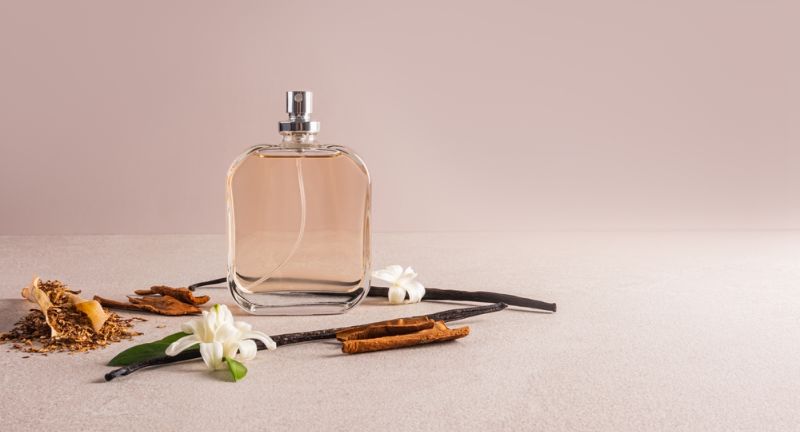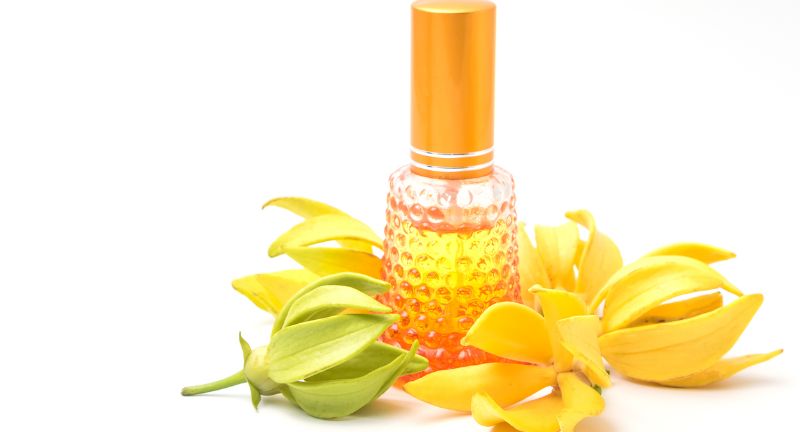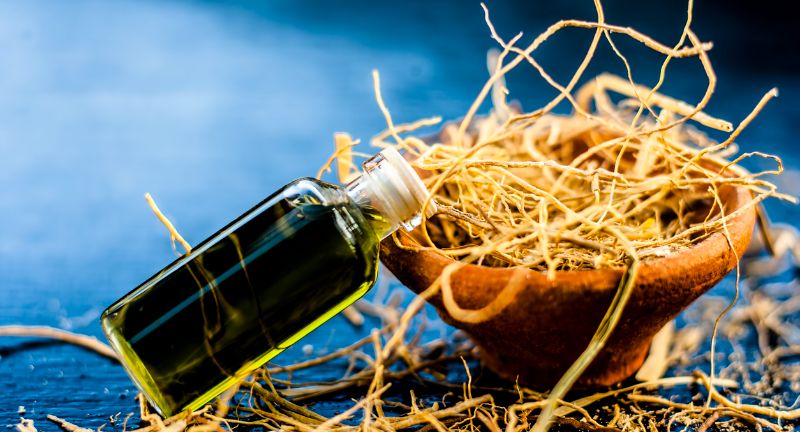
Shutterstock
Fragrance plays a pivotal role in personal expression and allure, with certain scents having the power to captivate and enchant those around us. The right combination of fragrance notes can create a unique scent that not only reflects personal style but also enhances appeal. From the warm, comforting embrace of vanilla to the invigorating zest of lemon, each fragrance note holds the key to unlocking emotions and memories. This collection explores thirty distinctive fragrance notes known for their magnetic and attractive qualities. Understanding these notes can help you choose or create a fragrance that resonates deeply and leaves a lasting impression.
Vanilla

Shutterstock
Vanilla is often associated with warmth, sweetness, and comfort, making it a staple in many popular fragrances. Its universally appealing scent is reminiscent of freshly baked goods and cozy winter evenings. Vanilla can enhance the depth and richness of other fragrance notes, creating a luscious base that lasts on the skin. It’s not just a favorite in perfumery but also widely used in aromatherapy to soothe and relax.
Lavender

Shutterstock
Lavender is celebrated for its clean, fresh aroma that evokes feelings of relaxation and calm. Often found in bedtime products, its soothing properties can help reduce stress and aid in sleep. The floral scent of lavender is versatile, pairing well with woody, citrus, or herbaceous notes in perfumes. Its timeless appeal makes it a favorite among all age groups and both genders.
Sandalwood

iStock
Sandalwood is known for its rich, woody base that adds depth to fragrance compositions. It has a creamy, almost milky texture that exudes warmth and sophistication. Frequently used in the base note of perfumes, sandalwood can help anchor lighter notes and extend the fragrance’s longevity on the skin. Its exotic scent profiles also make it popular in incense and ritualistic ceremonies.
Jasmine

Shutterstock
Jasmine is a highly fragrant, intensely floral note that is both sweet and slightly heady. It’s often associated with romance and sensuality, making it a common ingredient in love-themed perfumes. The floral richness of jasmine adds an elegant layer to fragrances, often used as a middle note that blooms warmly on the skin. In addition to its use in perfumery, jasmine is also appreciated in teas for its aromatic and soothing qualities.
Cedarwood

Shutterstock
Cedarwood has a distinctly sharp, woodsy scent that brings a natural, outdoorsy feel to fragrances. It is known for its grounding properties, often used in aromatherapy to promote calmness and reduce stress. Cedarwood can blend well with floral and citrus notes, creating a balanced, unisex fragrance appealing to a wide audience. Its robust profile also helps to add longevity and character to colognes and perfumes.
Rose

Shutterstock
Rose is perhaps one of the most classic and romantic fragrance notes, often linked with notions of love and purity. Its sweet, delicate floral scent is a staple in many feminine perfumes, offering a timeless elegance. Rose blends well with woody and spicy notes to create more complex scents. Besides its use in perfumery, rose water is also popular in skincare for its soothing and hydrating properties.
Bergamot

Shutterstock
Bergamot offers a uniquely fresh and slightly spicy citrus scent that is invigorating and uplifting. Commonly found in the top notes of colognes and perfumes, it provides an initial burst of freshness that can energize and refresh. Bergamot is particularly famous in the formulation of Earl Grey tea, where its aromatic profile enhances the tea’s flavor. Its oil is also used for its antiseptic properties and skin-benefiting qualities.
Patchouli

Shutterstock
Patchouli is notable for its rich, earthy, and musky aroma, often associated with the free-spiritedness of the 1960s and 70s. It’s a powerful base note that adds depth and persistence to fragrance blends. Patchouli works well with vanilla and sandalwood to create a warm, long-lasting, and exotic scent profile. This note is also credited with grounding and balancing effects in aromatherapy.
Ylang-Ylang

Shutterstock
Ylang-Ylang is an exotic, floral note with a touch of fruity sweetness, renowned for its use in luxurious perfumes. It provides a heady, intoxicating aroma that enhances the sensual quality of fragrances. Often paired with lighter floral and citrus notes, Ylang-Ylang contributes to a lush, vibrant bouquet in perfumes. This flower is also valued in aromatherapy for its ability to boost mood and reduce stress.
Amber

Shutterstock
Amber is a warm, resinous note that often forms the foundation of many oriental and woody perfumes. Its rich, slightly sweet scent provides a feeling of coziness and exotic luxury. Amber is actually a blend of several ingredients, which can include labdanum, benzoin, and vanilla, creating a deep, rich base. It’s also known for its longevity on the skin, making it a popular choice in the perfume industry for creating lasting impressions.
Peppermint

Shutterstock
Peppermint is known for its cool, refreshing scent that instantly awakens the senses. It is often used in fragrances to provide a crisp, clean note that can invigorate and energize. The aroma of peppermint is also associated with cleanliness and vitality, making it popular in personal care products. Additionally, its therapeutic properties include relieving stress and improving mental clarity.
Ginger

Shutterstock
Ginger offers a warm, spicy kick that can add a zesty dimension to any fragrance. Its sharp, invigorating scent is both stimulating and warming, ideal for adding a touch of excitement to a scent blend. Ginger pairs exceptionally well with citrus and woody notes, creating complex, intriguing perfumes. The note is also celebrated for its anti-inflammatory and antioxidant properties, making it beneficial in skincare routines.
Musk

Shutterstock
Musk is a fundamental note in the world of perfumery, known for its clean, subtle yet profound scent. It serves as a base note that enhances the longevity of fragrances on the skin and helps to bind other scents together. Originally derived from animal sources, most musk used today is synthetic, ensuring ethical practices. Its velvety, slightly animalistic aroma is cherished for its ability to add depth and sensuality to fragrances.
Cinnamon

Shutterstock
Cinnamon is celebrated for its warm, spicy aroma that conjures images of autumn and winter comforts. As a fragrance note, it brings a sweet yet spicy warmth that can be both invigorating and comforting. Cinnamon pairs well with other spicy notes, sweet vanillas, and even citrus to create a rich and layered scent. Beyond its use in perfumery, cinnamon is also appreciated for its antioxidant properties and as a stimulant in aromatherapy.
Orange Blossom

Shutterstock
Orange Blossom emits a fresh, floral, and slightly citrusy fragrance that is both uplifting and comforting. This delicate and sweet scent is often used as a heart note in perfumery, providing a light, airy quality to fragrances. It is particularly popular in feminine and unisex fragrances for its soft, refreshing, and approachable scent. The essence of orange blossom is also used in culinary and therapeutic applications, highlighting its versatility.
Lemon

Shutterstock
Lemon is a quintessentially fresh and clean scent, known for its ability to energize and enhance alertness. Its crisp, zesty aroma is a popular choice in both perfumery and household products. When used in fragrances, lemon adds a burst of freshness that can cut through richer, deeper notes, creating a balanced scent profile. The essential oil of lemon is also used in aromatherapy to boost mood and reduce stress.
Grapefruit

Shutterstock
Grapefruit offers a tart, refreshing, and slightly bitter scent that adds a vibrant, energetic note to any fragrance. Its aroma is often associated with cleanliness and freshness, making it a favorite in morning routines and summer scents. Grapefruit is also known for its ability to blend well with other citrus and floral notes, creating a lively and stimulating olfactory experience. Furthermore, its essential oil is praised for its antioxidant properties and uplifting effects.
Frankincense

Shutterstock
Frankincense is a mystical and ancient scent, known for its woody, spicy, and slightly sweet aroma. It has been used for centuries in spiritual and religious ceremonies, contributing to its sacred reputation. As a fragrance note, frankincense adds depth and resonance, often used to impart a smoky, meditative quality to perfumes. Its soothing properties are also valued in aromatherapy, helping to reduce anxiety and deepen relaxation.
Myrrh

Shutterstock
Myrrh is noted for its smoky, musty, and balsamic qualities, making it a profound base note in many oriental and woody fragrances. This resinous scent has been valued since ancient times for its ability to promote healing and spiritual upliftment. When blended in perfumes, myrrh contributes a rich, earthy depth that complements sweeter, floral top notes. It is also used in various health and beauty products for its therapeutic properties.
Neroli

Shutterstock
Neroli, derived from the blossom of the bitter orange tree, offers a sweet, honeyed, and slightly metallic fragrance. It is highly regarded for its ability to uplift and calm the mind, making it a popular choice in aromatherapy. In perfumery, neroli adds a rich floral note that pairs beautifully with citrus and floral scents, creating sophisticated and refreshing blends. The oil is also praised for its skin rejuvenating properties, often used in high-end skincare formulations.
Cardamom

Shutterstock
Cardamom is known for its sweet, spicy, and aromatic profile, which adds an exotic twist to fragrance compositions. This distinctively warm note is often used to introduce a burst of freshness and spice in both masculine and feminine scents. Cardamom blends exceptionally well with floral and citrus notes, enhancing the overall complexity and allure of a perfume. Its therapeutic benefits include aiding digestion and refreshing the breath, making it a multipurpose spice.
Tuberose

Shutterstock
Tuberose is a richly floral, creamy, and seductive scent that is often at the heart of many luxurious perfumes. Its heavy, intoxicating properties make it a favorite for evening wear and romantic occasions. The deep, voluptuous nature of tuberose can give perfumes a lush, almost narcotic quality. In addition to its use in perfumery, tuberose is also appreciated in aromatherapy for its relaxing and comforting properties.
Vetiver

Shutterstock
Vetiver is celebrated for its earthy, woody, and smoky aroma, which adds a robust depth to fragrance blends. Its grounding scent is often used in men’s perfumery, providing a mature and sophisticated character. Vetiver not only supports the composition of other fragrance notes but also enhances the longevity of scents on the skin. Known for its calming effects, it is also used in aromatherapy to help alleviate stress and anxiety.
Oud

Shutterstock
Oud, also known as agarwood, is a highly prized ingredient with a rich, musty, woody scent. It is revered in the Middle East and Asia for its deep, powerful aroma and has been used in traditional incense and perfumes for centuries. The rarity and complexity of oud make it a luxurious addition to high-end fragrances. Its scent profile is known for its ability to evoke depth and emotion, often described as warmly enveloping.
Tea Tree

Shutterstock
Tea Tree oil is famed for its medicinal, fresh, and herbal scent, which imparts a clean and crisp quality to fragrances. It is primarily known for its therapeutic benefits, including antibacterial and antifungal properties, making it a staple in health and wellness products. In perfumery, tea tree’s sharp, clear aroma can add a refreshing note, particularly in sporty or unisex fragrances. Its invigorating scent is also appreciated in aromatherapy to boost immunity and fight infections.
Magnolia

Shutterstock
Magnolia is characterized by its lush, lemony, and slightly sweet floral scent, which offers a delicate and elegant fragrance note. This bloom is often associated with the freshness of spring and is used in many floral perfumes for its bright and uplifting qualities. Magnolia pairs beautifully with woody and citrus notes, creating a balanced and refined perfume. In addition to its use in fragrances, magnolia is also valued for its soothing properties in traditional medicine.
Mint

Shutterstock
Mint is renowned for its cool, sharp, and fresh scent that instantly revitalizes and awakens the senses. This aromatic note is popular in both perfumes and a wide range of personal care products, from toothpaste to body washes. Its invigorating properties make it a favorite for summer fragrances or as a lively top note in complex scent compositions. Mint is also valued in aromatherapy for its ability to enhance mental clarity and reduce fatigue.
Saffron

Shutterstock
Saffron, known for its rich, leathery, and exotic aroma, is one of the most valuable spices in the world. It imparts a luxurious, slightly earthy and sweet note to perfumes, making it a sought-after ingredient in high-end fragrances. Saffron’s unique scent profile can enhance the warmth and complexity of a fragrance, making it more intriguing and memorable. Its use is not limited to perfumery; it is also prized in culinary applications for its flavor and color.
Chamomile

Shutterstock
Chamomile is best known for its light, soothing, and apple-like scent that brings a sense of calm and tranquility. It is widely used in aromatherapy to help reduce anxiety and promote sleep, making it a popular ingredient in nighttime and relaxation products. The gentle, calming nature of chamomile makes it a delightful addition to soft floral perfumes. Additionally, chamomile is used in skincare for its anti-inflammatory and healing properties, benefiting sensitive and irritated skin.
Freesia

Shutterstock
Freesia offers a peppery, citrusy, and distinctly floral aroma that is both vibrant and refreshing. Its light and airy scent is often used in spring and summer fragrances, bringing a bright and cheerful quality to perfume compositions. Freesia pairs exceptionally well with other floral and citrus notes, enhancing the fragrance’s freshness and complexity. This flower is also appreciated for its ability to evoke a sense of purity and new beginnings.
Conclusion

Shutterstock
As we’ve explored the various alluring fragrance notes, it’s clear that each note carries its own unique story and emotional resonance. Whether you’re drawn to the soothing calm of lavender or the exotic richness of oud, your choice of fragrance can significantly influence how you are perceived and how you feel. Crafting a personal scent is an art form that involves balancing these notes to suit your individual style and personality. By understanding the characteristics and effects of each note, you can create a signature scent that not only attracts but also perfectly expresses who you are. Let these fragrance notes inspire you to experiment with scents and discover the transformative power of a truly personal perfume.


























































